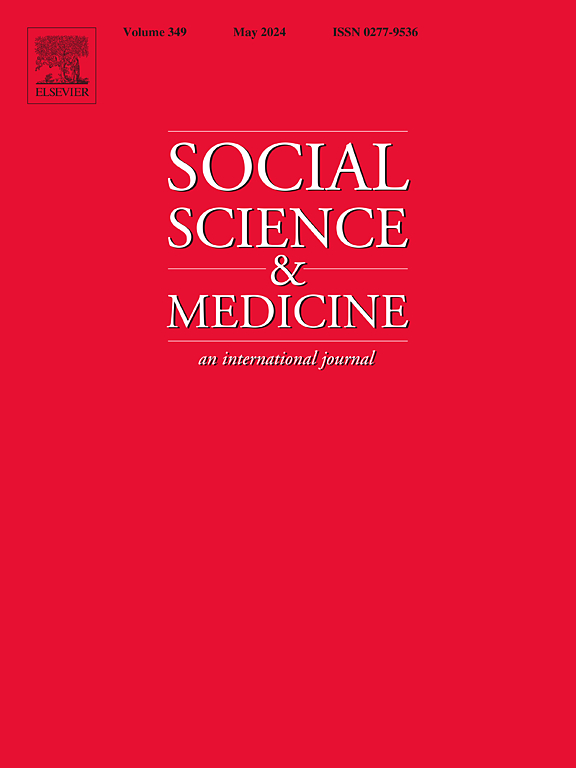Aversion to income, ethnic, and geographic related health inequality: Evidence from Australia
IF 4.9
2区 医学
Q1 PUBLIC, ENVIRONMENTAL & OCCUPATIONAL HEALTH
引用次数: 0
Abstract
This study investigated the Australian general public's views on trade-offs between reducing health inequalities and improving total health. It elicited relative equity weights, comparing inequalities in life expectancy at birth across three equity-relevant dimensions: income (comparing poorest versus richest fifth), ethnic (comparing Indigenous versus non-Indigenous), and geographic (comparing rural/remote versus major cities). A benefit trade-off exercise was administered via online survey to a sample of Australian adults (n = 3105) using quota sampling to ensure population representativeness across key demographic variables (age, gender, state of residence, household income and education level). When comparing income groups, 88% (95% Confidence Interval (CI): 82%–92%) of the respondents were health inequality averse, with 42% (95% CI: 34%–51%) demonstrating extreme inequality aversion. When considering Indigenous status, 85% (95% CI: 79%–90%) showed inequality aversion, and 40% (95% CI: 31%–49%) displayed extreme aversion. Lastly, looking at different geographic locations, 74% (95% CI: 66%–80%) of the respondents were inequality averse, with 37% (95% CI: 29%–46%) showing extreme inequality aversion. The relative equity weights were calculated, allowing for varying baseline inequalities in life expectancy – proportional gaps of 10.8%, 5.1% and 6.3%, respectively. The results imply that the public is willing to weight incremental health gains to the poorest fifth five times more than to the richest fifth, six times more for Indigenous versus non-Indigenous, and four times more for people living in rural and remote areas compared to major cities.
对与收入、种族和地域相关的健康不平等的厌恶:来自澳大利亚的证据
本研究调查了澳大利亚普通公众对减少健康不平等与改善总体健康之间的权衡的看法。该研究从三个与公平相关的维度:收入(比较最贫穷与最富有的五分之一)、种族(比较土著与非土著)和地理(比较农村/偏远地区与大城市)来比较出生时预期寿命的不平等,从而得出相对公平权重。我们通过在线调查对澳大利亚成年人(n = 3105)进行了利益权衡抽样,采用配额抽样以确保关键人口变量(年龄、性别、居住州、家庭收入和教育水平)的人口代表性。在比较收入群体时,88%(95% 置信区间:82%-92%)的受访者厌恶健康不平等,42%(95% 置信区间:34%-51%)的受访者表现出极端厌恶不平等。考虑到土著居民的身份,85%(95% CI:79%-90%)的受访者表示厌恶不平等,40%(95% CI:31%-49%)的受访者表示极端厌恶不平等。最后,从不同地理位置来看,74%(95% CI:66%-80%)的受访者厌恶不平等,37%(95% CI:29%-46%)的受访者表现出极端厌恶不平等。在计算相对公平权重时,考虑到了不同的预期寿命基线不平等--比例差距分别为 10.8%、5.1% 和 6.3%。结果表明,与最富有的五分之一人口相比,公众愿意为最贫穷的五分之一人口增加的健康收益加权五倍,为土著居民和非土著居民增加的健康收益加权六倍,为农村和偏远地区居民增加的健康收益加权四倍。
本文章由计算机程序翻译,如有差异,请以英文原文为准。
求助全文
约1分钟内获得全文
求助全文
来源期刊

Social Science & Medicine
PUBLIC, ENVIRONMENTAL & OCCUPATIONAL HEALTH-
CiteScore
9.10
自引率
5.60%
发文量
762
审稿时长
38 days
期刊介绍:
Social Science & Medicine provides an international and interdisciplinary forum for the dissemination of social science research on health. We publish original research articles (both empirical and theoretical), reviews, position papers and commentaries on health issues, to inform current research, policy and practice in all areas of common interest to social scientists, health practitioners, and policy makers. The journal publishes material relevant to any aspect of health from a wide range of social science disciplines (anthropology, economics, epidemiology, geography, policy, psychology, and sociology), and material relevant to the social sciences from any of the professions concerned with physical and mental health, health care, clinical practice, and health policy and organization. We encourage material which is of general interest to an international readership.
 求助内容:
求助内容: 应助结果提醒方式:
应助结果提醒方式:


